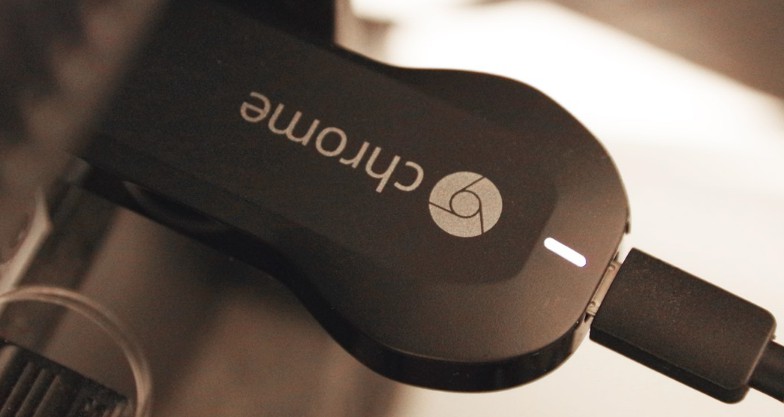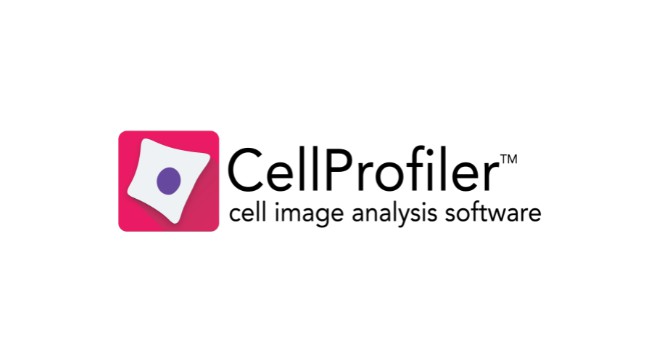impy
Speed up image analysis in Python with efficient reading, batch-processing, viewing functions and easily extend your own function for batch processing.
Image analysis programatically is sometimes troublesome like ...
- for multi-dimensional images, you need to check which is time-axis and which is channel axis and so on.
- you need to consider the output data types and shapes for every batch image processing.
- you need to care about all the images' information such as the names and directories of original images.
- hard to edit images interactively.
As a result, isn't it faster to analyze images using ImageJ? This module solves these major problems of Python based image analysis and makes it much more effective.
Installation
pip install git+https://github.com/hanjinliu/impy
impy is partly dependent on numba, trackpy, mrcfile and dask-image. Please install these packages if needed.
Highlights
1. Handling Axes Easily
Image axes/scales are automatically read from file metadata and as a result, arrays support axis-targeted slicing like:
img["t=3;z=5:7"]
img["y=3,5,7"] = 0
Accordingly, broadcasting is more flexible. (tensor_annotations seems similar in this sense)
2. Automatic Batch Processing
Almost all the image processing functions can automatically iterate along all the axes needed. If you want to run batch Gaussian filter on a image hyperstack, just call img.gaussian_filter(), and the filtering function considers zyx-axes as a spatially connected dimensions and is repeated for every rest of axis like t, c. Prallel image processing is optimized for many function by temporarily converting into dask array. Check Image Analysis Tools for available functions.
You can even run batch processing with your own functions by decorating them with @ip.bind. See Integrating Your Own Functions part.
You may usually want to perform same filter function to images with different shapes and dimensions. DataList is a list-like object and it can iterate over all the images (or other objects) with __getattr__ method.
imglist = ip.DataList(imgs)
outputs = imglist.gaussian_filter(sigma=3) # filter is applied to all the images
3. Metadata and History
All the information, history and metadata are inherited to outputs, like:
img
shape : 10(t), 20(z), 256(y), 256(x)
label shape : No label
dtype : uint16
directory : ...\images
original image: XXX
history : gaussian_filter(sigma=1)
Therefore, results can always be saved in the same directory, without copy-and-pasting paths.
4. Image Viewer
impy provides seamless interface between napari, a great image visualization tool. Image axes and other information are utilized before sending to napari.Viewer, so that you don't need to care about keyword arguments and what function should be called.
You can also manually crop or label ImgArray with napari's Shapes objects, or run impy functions inside the viewer. I also implemented useful custom keybindings and widgets. See Napari Interface for details.
5. Extended Numpy Functions
In almost all the numpy functions, the keyword argument axis can be given as the symbol of axis like:
np.mean(img, axis="z") # Z-projection
np.stack([img1, img2], axis="c") # color-merging
This is achieved by defining __array_function__ method. See here for details.
You can also make an ImgArray in a way similar to numpy:
ip.array([2,4,6], dtype="uint16")
ip.random.normal(size=(100, 100))
6. Reading Images Lazily
When you deal with large images, you may want to read just part of them to avoid waiting too long, or sometimes they are too large for the PC memory to read. In ImageJ there is an option called "virtual stack" but still it is not flexible enough.
In impy, there are several ways to efficiently deal with large datasets. See Image I/O for details.
Contents
ImgArrayis an array mainly used for image analysis here. Manyskimage's functions are wrapped in this class.PropArrayis an array that contains properties of another array, such as mean intensities of fixed regions of an array.Labelis also an array type while it is only used for labeling of another image and is always attached to it.PhaseArrayis an array that contains phase values. Unit (radian or degree) and periodicity are always tagged to itself so that you don't need to care about them.MarkerFrameis a subclass ofpandas.DataFrameand it is specialized in storing coordinates and markers, such as xyz-coordinates of local maxima. This class also supports axis targeted slicingdf["x=4;y=5"]. Tracking methods are also available, which call trackpy inside.TrackFrameis quite similar toMarkerFramewhile it is only retuned when points are linked by particle tracking. It has information of track ID.DataListcan apply same method to all the data inside it.LazyImgArraykeeps memory map to an image as andaskarray and you can access image metadata and slice the images without reading them. Some filter functions are supported indask-image.guiis a controller object that connects console andnapari.Viewer.
Image Analysis Tools
ImgArray has a lot of member functions for image analysis. Some of them supports multiprocessing.
-
Drift/Aberration Correction
track_drift,drift_correction→ Correction of xy-drift.affine_correction→ Correction of such as chromatic aberration using Affine transformation.
-
2D/3D Deconvolution
wiener,lucy→ Classical Wiener's and Richardson-Lucy's algorithm.lucy_tv→ Richardson-Lucy's algorithm with total variance (TV) regularization.
-
Filters
mean_filter,meadian_filter,gaussian_filter,directional_median_filter→ Smoothing.dog_filter,doh_filter,log_filter→ Blob detection by DoG, DoH, LoG filter.edge_filter,laplacian_filter→ Edge detection.std_filter,coef_filter→ Standard deviation based filtering.lowpass_filter,highpass_filter→ FFT based filtering.entropy_filter,enhance_contrast,gabor_filter→ Object detection etc.kalman_filter,wavelet_denoising,rof_filter→ Advanced denoising methods.
-
Morphological Image Processing
erosion,dilation,opening,closing→ Basic ones.area_opening,area_closing,diameter_opening,diameter_closing→ Advanced ones.skeletonize,fill_hole→ Binary processing.count_neighbors→ For structure detection in binary images.remove_large_objects,remove_fine_objectsremove_skeleton_structure→ Detect and remove objects.
-
Single Molecule Detection
find_sm,peak_local_max→ Return coordinates of single molecules.centroid_sm,gauss_sm,refine_sm→ Return coordinates in subpixel precision.
-
Background/Intensity Correction
rolling_ball,tophat→ Background subtraction.gaussfit,gauss_correction→ Use Gaussian for image correction.unmix→ Unmixing of leakage between channels.
-
Labeling
label,label_if,label_threshold→ Labeling using binary images.specify→ Labeling around coordinates.append_label→ Label images.expand_labels,watershed,random_walker→ Adjuct or segment labels.
-
Feature Detection
hessian_eigval,hessian_eig→ Hessian.structure_tensor_eigval,structure_tensor_eig→ Structure tensor.ncc,track_template→ Template matching and tracking.
-
Gradient Orientation Estimation
edge_grad
-
Filament Orientation Estimation
hessian_angle→ Using Hessian eigenvector's orientations.gabor_angle→ Using Gabor filter's responses.
-
Property Measurement
regionprops→ Measure region properties such as mean intensity, Euler number, centroid, moment etc.pathprops→ Measure path properties such as mean intensity.lineprops,pointprops→ Measure line/point properties.
-
Texture Classification
lbp,glcm,glcm_props
-
Profiling
reslice→ Get scan along a line or path.radial_profile→ Radial profiling of n-D images.
-
Others
focus_map→ Find focus using variance of Laplacian method.stokes→ Analyze polarization using Stokes parameters.fft,power_spectra,ifft→ Fourier transformation.threshold→ Thresholding (many methods included).crop_center,crop_kernel,remove_edges,rotated_crop→ Crop image.clip,rescale_intensity→ Rescale the intensity profile into certain range.proj→ Z-projection along any axis.split,split_pixel_unit→ Split the image.pad,defocus→ Padding.iter,for_each_channel→ Easy iteration.set_scale→ set scales of any axes.imshow→ visualize 2-D or 3-D image withmatplotlib.imsave→ save image (by default save in the directory that the original image was loaded).
Image I/O
impy provides useful I/O functions for effective image analysis.
-
impy.imreadLoad image and convert them into
ImgArray. Many formats supported:>>> ip.imread(r"C:\Users\...\images.tif")... read single tif file.>>> ip.imread(r"C:\Users\...\xx\*.tif")... read all the tif files in a directory.>>> ip.imread(r"C:\Users\...\xx\**\*.tif")... read all the tif files recursively.>>> ip.imread(r"C:\Users\...\images.tif", key="t=0")... only read the first time frame (much more efficient for large datasets).>>> ip.imread(r"C:\Users\...\condition$i\image-pos$p.tif")... read all the tif files in a certain pattern. In this case, paths such as"...\condition2\image-pos0.tif"are read and they are arranged intoi/p-axes.
-
impy.imread_collectionLoad images into
DataList. Wildcards are supported (like 2. and 3. inimpy.imreadexamples).imgs = ip.imread_collection(r"C:\Users\...\xx\**\*.tif") ip.gui.add(imgs.kalman_filter()) # run Kalman filter for each image stack and view them in napari. -
impy.lazy_imreadLoad an image lazily, i.e., image data is acturally read into memory only when it is needed. This function returns
LazyImgArray, which cannot conduct operations but you can access metadata like those inImgArray, by such as.axes,.shape,.dirpath,.scaleetc.limg = ip.lazy_imread(r"C:\Users\...\xx\**\*.tif") print(limg.gb) # print GB of the image limg_center = limg["z=120;y=1000:2000;x=1500:2500"] # get a part of the image limg_center.data # get data as ImgArrayWith preview in
napari, you can manually select a small region of the large image and read it into ImgArray.ip.gui.add(limg) # preview LazyImgArray ### In the napari window, add a shape layer, draw a rectangle and Ctrl+Shift+X to crop it### img = ip.gui.selection[0] # get the selected image layer as ImgArray
Napari Interface
impy.gui has methods for better interface between images and napari.

-
Add any objects (images, labels, points, ...) to the viewer by
ip.gui.add(...). -
Return all the manually selected layers' data by
layers = ip.gui.selection. -
Run
ImgArray's method inside viewers. -
Translate and rescale layers with mouse.
Alt+ mouse drag → lateral translationAlt+Shift+ mouse drag → lateral translation restricted in either x- or y-orientation (left button or right button respectively).Alt+ mouse wheel → rescalingCtrl+Shift+R→ reset original states.
-
Fast layer selection and manipulation.
Ctrl+Shift+A→ Hide non-selected layers. Display all the layers by push again.Ctrl+Shift+F→ Move selected layers to front.Alt+L→ Convert all the shapes in seleted shape-layers into labels of selected image-layers.Ctrl+Shift+D→ Duplicate selected layers.Ctrl+Shift+X→ Crop selected image-layers with all the rectangles in selected shape-layers. Rotated cropping is also supported!/→ Reslice selected image-layers with all the lines and paths in selected shape-layers. Result is stored inip.gui.resultsfor now.Ctrl+P→ Projection of shape-layers or point-layers to 2D layers.Ctrl+G/Ctrl+Shift+G→ Link/Unlink layers. Like "grouping" in PowerPoint.Shift+S/S→ Add 2D/nD shape-layer.Shift+P/P→ Add 2D/nD point-layer.
-
Show coordinates of selected point-layers or track-layers. You can also copy it to clipboard.
-
Note pad in
Window > Note. -
Call
impy.imreadinFile > imread .... Callimpy.imsaveinFile > imsave ....
napari is now under development itself so I'll add more and more functions (I'm especially looking forward to layer group and text layer).
Integrating Your Own Functions
ImgArray is designed highly extensible. With impy.bind, You can easily integrate functions that converts:
- image → image (image filtering, thresholding etc.)
- image → scalar (measuring/estimating properties)
- image → label (feature detection, image segmentation etc.)
Suppose you want to use imfilter, a image filtering function that works on float images, for batch processing of multi-dimensional images. Just write
import impy as ip
@ip.bind(indtype="float32")
def imfilter(img, param=None):
# do something for a 2D or 3D image.
return out
or
ip.bind(imfilter, indtype="float32")
or in with-block for temporary usage
with ip.bind(imfilter, indtype="float32"):
...
and now it's ready to execute batch-imfilter!
img = ip.imread(r"...\images\XXX.tif")
img.imfilter(param=3)
This function is also accessible inside napari viewers.








